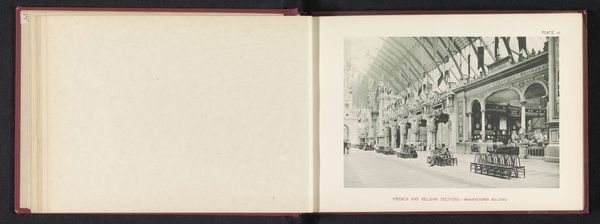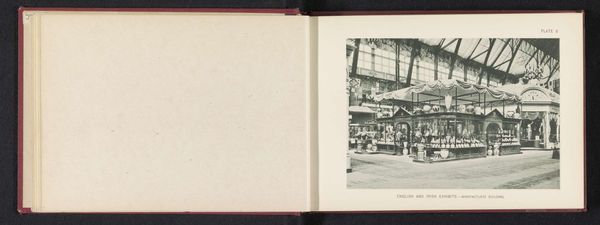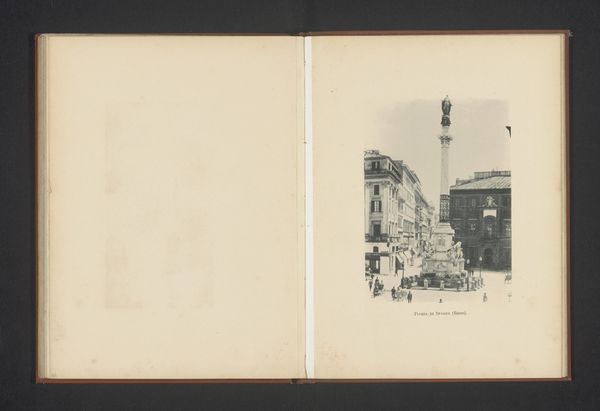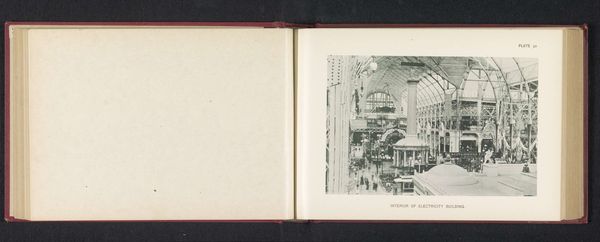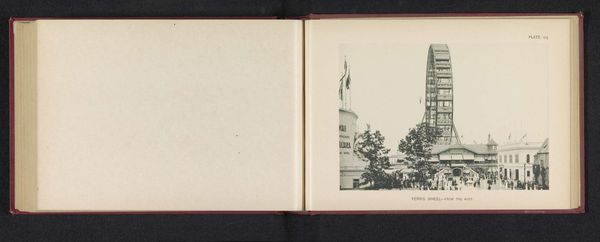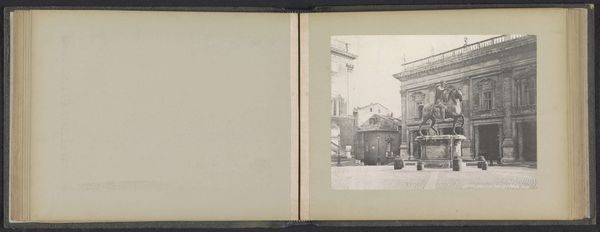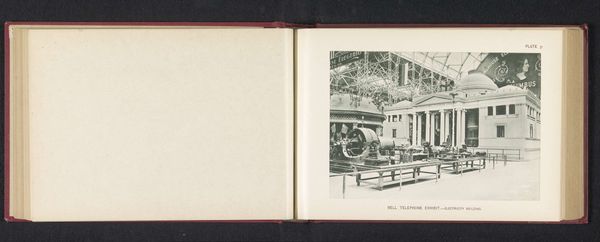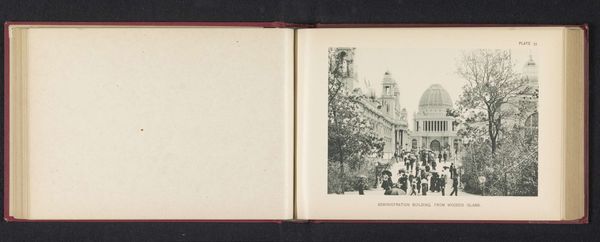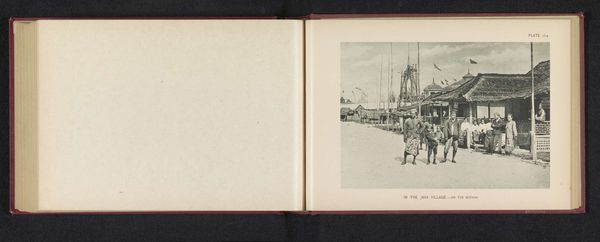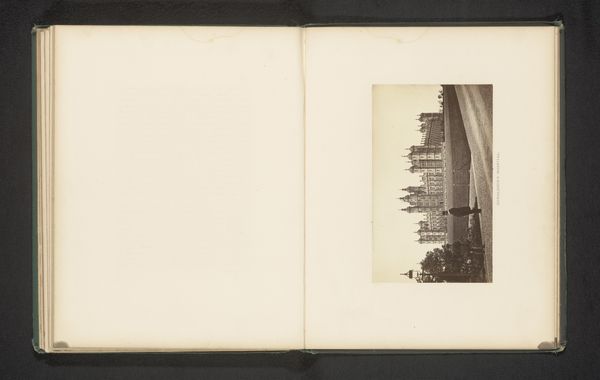
Gezicht op een straat met daaraan landenpaviljoens en een reuzenrad op de World's Columbian Exposition in Chicago in 1893 1893
0:00
0:00
print, photography, gelatin-silver-print
#
pictorialism
# print
#
photography
#
gelatin-silver-print
#
cityscape
#
realism
Dimensions: height 132 mm, width 190 mm
Copyright: Rijks Museum: Open Domain
Editor: So, here we have a gelatin silver print from 1893 by Charles Dudley Arnold. It's titled "View of a Street with National Pavilions and a Ferris Wheel at the World's Columbian Exposition in Chicago." The scene is so grand, but it also feels incredibly ordered and, well, almost utopian. What stands out to you about this image? Curator: That feeling of order and utopia is exactly what strikes me too. It's a carefully constructed vision, one deeply rooted in the late 19th-century's fervent belief in progress and civilization. This exposition was showcasing national identities and technological advancements. But consider *whose* progress was being celebrated, and at what cost? Editor: I see what you mean. It does feel very… curated. Curator: Exactly. These World’s Fairs were inherently political. The pavilions present idealized, often romanticized versions of their respective nations. What’s visible, and even more crucially, what's deliberately omitted? Think about whose voices were amplified here, and whose were silenced. What narratives about race, colonialism, and labor were being reinforced? Editor: So it's not just a snapshot of a fair, but a deliberate piece of propaganda almost? Curator: Propaganda is a strong word, but it gets at the truth: This is a carefully managed performance. Look at the broad, clean street, the diverse but orderly crowd. Where are the marginalized populations? Whose labor built these grand pavilions and operated the Ferris wheel? Consider the impact this exposition had on the Indigenous communities, displaced and often misrepresented. How do you think viewing the photo this way changes your initial impressions? Editor: It certainly takes the shine off the utopian feel, and it makes you question the narrative being presented. It becomes a picture full of things that *aren't* shown. Curator: Precisely! By examining the image through this lens, we reveal layers of social and political context, making us more critical viewers of not just historical documents, but also the present day's constructed realities. Editor: This has really opened my eyes to how much a single image can reveal about its time. Thank you!
Comments
No comments
Be the first to comment and join the conversation on the ultimate creative platform.


